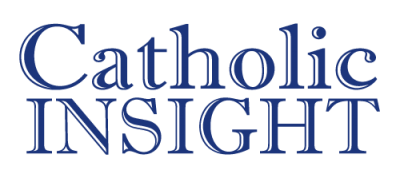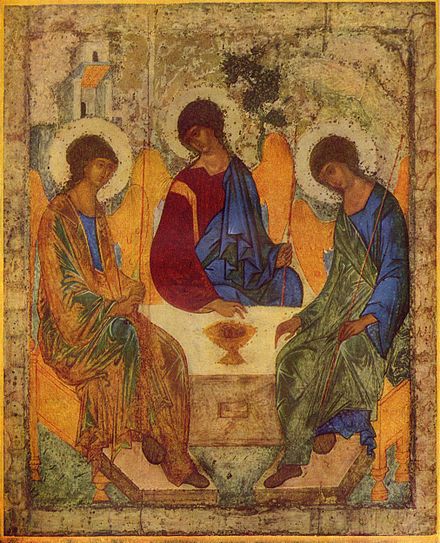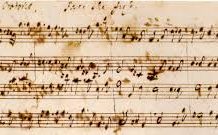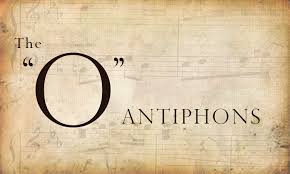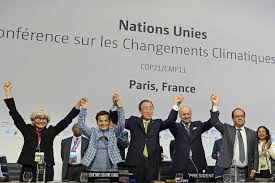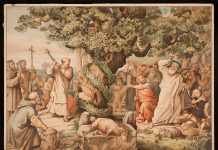You may wonder how the Feast of the Holy Trinity came to be celebrated on the Sunday after Pentecost. It was not always celebrated today; in fact, we are approaching the seven hundredth anniversary of its universal institution under Pope John XXII (✝ 1334) in the fourteenth century.[1] Before then, the Sunday remained vacant, a dominica vacans upon which no feast was celebrated, and the churches in each region of Europe had their own particular customs for celebrating the day.[2] The votive mass of the Holy Trinity, arranged by Alcuin of York (✝ 804), was a common selection for this Octave day of Pentecost.[3] Prayers for this votive mass, for instance, can be found on the Octave of Pentecost in various manuscripts of the Gregorian Sacramentary,[4] a common book for the Mass during the time of Charlemagne and widely attested to be the work of Saint Gregory I (✝ 604).[5]
The Roman Church, nevertheless, held out with its custom of keeping the Sunday vacant.[6] In the eleventh century, Pope Alexander II (✝ 1073) researched the antiquity of the regional custom and declined to institute the feast for the universal church, citing that the Holy Trinity was commemorated already on every Sunday, and even at every daily mass with the Gloria Patri.[7] He saw no reason why the commemoration of the Holy Trinity should be pinned down to one particular day, since the same would need to apply for the Holy Unity, which the Catholic faith also professes.[8] The Pope also pointed out that Alcuin arranged votive masses for the other days of the week, such as that of the Holy Cross for Friday and of the Blessed Virgin Mary for Saturday. These masses, he argued, could be celebrated on any Friday or Saturday throughout the year, without any need to pin it down to a particular Friday or Saturday.[9] Thus, he concluded that Trinity Sunday should remain a Mass of devotional preference, rather than a Mass of pontifical mandate.
When Pope Alexander II made his inquiry into the history of the tradition, it was still the eleventh century, and feasts of common devotion, like Corpus Christi, were not yet situated in the universal calendar. It took till the fourteenth century for the feast to see its universal institution. Pope John XXII, the second pope of the Avignon Papacy, was nearing the end of his eighteen-year pontificate when he established the feast on the Octave day of Pentecost. No longer in Rome, he resided in a part of the Empire accustomed to the Carolingian use of the votive mass. He was on poor terms with the Emperor, Louis IV – who had fixed an antipope in Rome, Nicholas V – and many of his cardinals throughout Western Europe wished to have him deposed.[10] The Pope was also in the midst of a theological controversy at the time, for he had preached in a sequence of homilies that the saints do not enjoy the beatific vision until the final judgement.[11] Wishing to defend his orthodoxy and win the favour of those around him in Avignon,[12] John XXII raised the votive mass of the Holy Trinity to the status of a universal feast to be celebrated on the Sunday immediately following the feast of Pentecost, using the office which “had been made by the Franciscan John Peckham, Canon of Lyons, later Archbishop of Canterbury (✝ 1292).”[13]
The Feast of the Holy Trinity today still bears some of the marks of its antiquity. Both the introit and the responsorial psalm from Year A – the former from Tobit 12, the latter from Daniel 3 – are with some revision pre-Tridentine, dating perhaps back to the office of John Peckham. The Gospel from Year B, Saint Matthew’s account of the Great Commission, is also pre-Tridentine, with an extension of two verses at the beginning for a longer reading. The oratio super oblata and the oratio post communionem, with some revision, can be found in manuscripts of the Gregorian Sacramentary, together with the Tridentine collect, which is without revision.[14] These, with little doubt, were collected by Alcuin and his fellow liturgists during the Carolingian Renaissance, and may have been the prayers used by Pope Gregory I. Lastly, the beautiful and wondrous preface which we have to this day is pre-Gregorian, the composition of Pope Pelagius II, who reigned as Pope in the late sixth century.[15]
Today’s feast has a rich and profitable history, and we would do well to familiarize ourselves with it. But today we also have the opportunity to worship with greater devotion our God who stands blissfully outside of history, who remains ever Triune throughout the vicissitudes of time. Let us remember the history of the feast, but at the same time seek him who stands outside of it.
A joyous and blessed Trinity Sunday to you all.
Bibliography
Berno of Reichenau. “Libellus de quibusdam rebus ad missae officium pertinentibus.” In
Patrologia Latina. Vol. 142, 1061-63. 1066-67.
Bernold of Constance. “Micrologus de ecclesiasticis observationibus.” In Patrologia Latina. Vol. 1019-20.
Gregory the Great. “Liber sacramentorum.” In Patrologia Latina. Vol. 78. 116-17.
Kirsch, Johann Peter. “Micrologus.” In The Catholic Encyclopedia. Vol. 10.
https://www.newadvent.org/cathen/10285a.htm
Kirsch, Johann Peter. “Pope John XXII.” In The Catholic Encyclopedia. Vol. 8.
https://www.newadvent.org/cathen/08431a.htm.
Mershman, Francis. “Trinity Sunday.” In The Catholic Encyclopedia. Vol. 15. Edited by Charles Herbermann et. al. The Encyclopedia Press, 1913. 58.
Endnotes:
[1] Francis Mershman, “Trinity Sunday” in The Catholic Encyclopedia, vol. 15, edited by Charles G. Herbermann et. al, The Encyclopedia Press, 1913, 58.
[2] Berno of Reichenau, “Libellus de quibusdam rebus ad missae officium pertinentibus” in Patrologia Latina, vol. 142, 1061-63, 1066-67.
[3] Bernold of Constance, “Micrologus de ecclesiasticis observationibus” in Patrologia Latina, vol. 151, 1019-20.
[4] Gregory the Great, “Liber sacramentorum” in Patrologia Latina, vol. 78, 116-17.
[5] Francis Mershman, “Trinity Sunday,” 58.
[6] Bernold of Constance, “Micrologus de ecclesiasticis observationibus,” 1019-20.
[7] Bernold of Constance, “Micrologus de ecclesiasticis observationibus,” 1019-20.
[8] Bernold of Constance, “Micrologus de ecclesiasticis observationibus,” 1019-20.
[9] Bernold of Constance, “Micrologus de ecclesiasticis observationibus,” 1019-20.
[10] Johann Peter Kirsch, “Pope John XXII” in The Catholic Encyclopedia, vol. 8. https://www.newadvent.org/cathen/08431a.htm.
[11] Johann Peter Kirsch, “Pope John XXII,” https://www.newadvent.org/cathen/08431a.htm.
[12] This assertion is of my own historical judgement, taking into account the circumstances which moved him to universalize the feast at the time which he did.
[13] Francis Mershman, “Trinity Sunday,” 58.
[14] Gregory the Great, “Liber sacramentorum,” 116-17.
[15] Bernold of Constance, “Micrologus de ecclesiasticis observationibus,” 1019-20.
